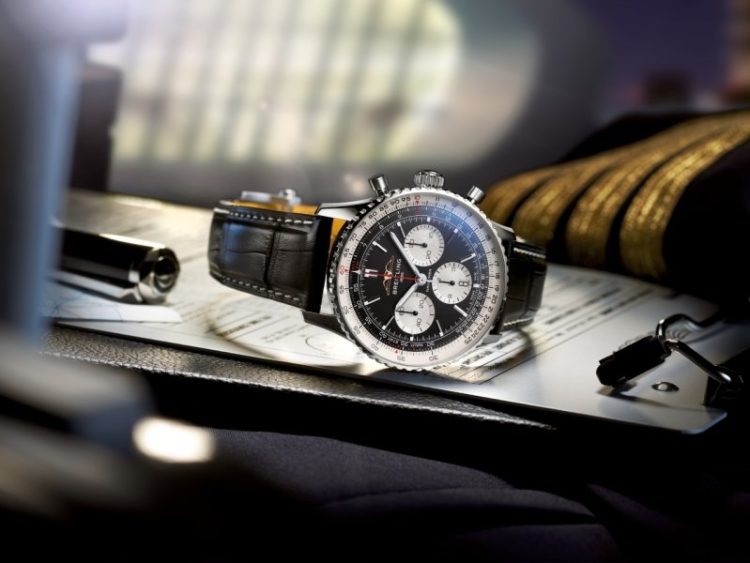Introduction
Breitling, a name synonymous with precision and luxury, has consistently pushed the boundaries of watch technology. From pioneering aviation tools to integrating cutting-edge innovations, Breitling’s commitment to horological advancement remains unmatched. In this article, we delve deep into the technological marvels that define Breitling watches, exploring their past, present, and vision for the future.
1. The Technological Roots of Breitling
- Founding Vision (1884):
- Léon Breitling established the brand with a focus on precision instruments for industrial and scientific purposes.
- Early innovations centered on pocket chronographs, laying the foundation for technical excellence.
- The Birth of the Modern Chronograph (1915-1934):
- Breitling’s first wrist chronograph in 1915 introduced a separate push-piece for starting and stopping, revolutionizing usability.
- In 1934, the addition of a second pusher to reset the chronograph cemented Breitling’s reputation as a leader in timing technology.
2. Pioneering Chronograph Technology
- Navitimer’s Slide Rule (1952):
- Developed as a tool for pilots, the Navitimer’s circular slide rule allows for complex aviation calculations directly on the wrist.
- User feedback consistently highlights its functionality and historical significance.
- SuperQuartz™ Movement:
- Breitling’s proprietary SuperQuartz™ technology is ten times more accurate than standard quartz movements, addressing the demands of professionals in precision-critical fields.
3. In-House Innovations
- The Breitling Manufacture Caliber:
- Introduced in 2009, the Caliber B01 represents Breitling’s commitment to in-house movement production.
- Features include:
- 70-hour power reserve.
- Chronograph function with vertical clutch and column wheel for enhanced precision.
- Exceptional durability and serviceability.
- GMT Technology:
- Breitling’s GMT watches, such as the Chronomat GMT, allow users to track multiple time zones with precision and ease.
- High-Frequency Movements:
- Certain Breitling movements operate at 28,800 vibrations per hour (4 Hz), ensuring greater accuracy and stability.
4. Material Science in Breitling Watches
- Innovative Case Materials:
- Titanium: Lightweight and corrosion-resistant, used in models like the Aerospace Evo.
- Breitlight®: A proprietary polymer material that is lighter than titanium and highly resistant to scratches and corrosion, found in the Avenger Hurricane.
- Dial and Crystal Technology:
- Anti-reflective sapphire crystals enhance legibility under varying light conditions.
- Luminescent markers, powered by Super-LumiNova®, ensure visibility in low-light environments.
- Strap Innovation:
- Breitling’s ECONYL® straps, made from recycled ocean waste, highlight the brand’s commitment to sustainability.
5. Digital Integration and Smartwatch Capabilities
- Breitling Exospace B55:
- A hybrid smartwatch designed for pilots, featuring Bluetooth connectivity for smartphone synchronization.
- Functions include:
- Flight timing.
- Chronograph recording.
- Customizable alarms and notifications.
- Connected Technology:
- Breitling’s focus on connected devices blends traditional craftsmanship with modern convenience, appealing to tech-savvy users.

6. Aerospace and Military Applications
- Aerospace Evo:
- Designed for aviators, this model integrates digital and analog displays, offering precision in altitude, temperature, and chronograph measurements.
- Emergency Watch:
- Equipped with a dual-frequency distress beacon, the Emergency watch is a lifesaving tool for adventurers.
- The microtransmitter operates on aviation distress frequencies, enabling rescue operations in remote locations.
7. Water Resistance and Dive Technology
- Superocean Heritage:
- Water resistance up to 1,000 meters in select models ensures reliability for professional divers.
- Helium escape valves in models like the Superocean Chronograph M2000 protect against pressure changes during deep-sea exploration.
- Ceramic Bezels:
- Scratch-resistant and corrosion-proof, ceramic bezels enhance the durability of dive watches.
8. Sustainability and Innovation
- Renewable Energy and Manufacturing:
- Breitling’s production facilities prioritize renewable energy and environmentally friendly practices.
- Recycled Materials:
- The brand’s use of recycled metals and plastics underscores its commitment to reducing environmental impact without compromising quality.
9. User Experience: Precision Meets Functionality
- Ergonomic Design:
- Breitling watches are engineered for comfort, with carefully designed cases and straps that cater to diverse wrist sizes.
- Ease of Maintenance:
- Modular movement design simplifies servicing, extending the lifespan of Breitling watches.
- Advanced Features:
- Users appreciate innovations such as countdown timers, tachymeters, and perpetual calendars integrated into Breitling models.
10. The Future of Breitling Technology
- Focus on Smartwatches:
- Breitling aims to expand its range of hybrid and fully connected timepieces, integrating advanced features like health monitoring and enhanced connectivity.
- Sustainable Materials:
- The development of eco-friendly alloys and synthetic sapphire crystals is part of Breitling’s ongoing innovation.
- AI-Enhanced Manufacturing:
- Artificial intelligence and machine learning streamline production processes while maintaining artisanal quality.
Conclusion
Breitling’s relentless pursuit of technological excellence cements its place as a trailblazer in the watch industry. From groundbreaking chronographs to sustainable practices, the brand continues to define what it means to be at the forefront of horological innovation. Breitling watches are not just instruments of timekeeping but masterpieces of engineering, embodying the perfect blend of tradition and modernity.





































